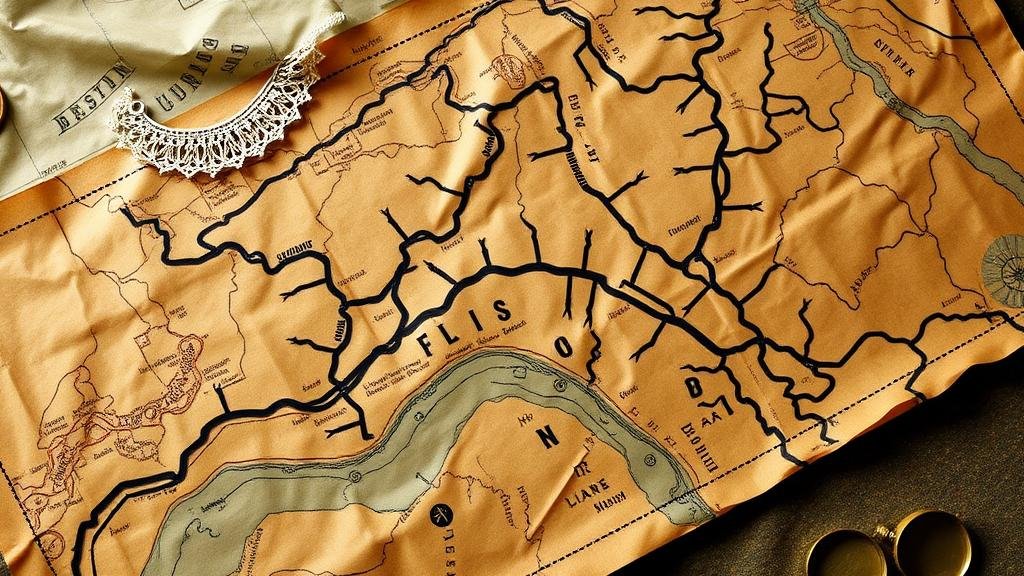Deciphering Treasure Maps With Secret Overlapping Trails
Deciphering Treasure Maps With Secret Overlapping Trails
The allure of treasure maps has fascinated adventurers, historians, and archaeologists for centuries. These enigmatic documents often serve as portals to long-lost riches, hidden artifacts, and untold stories. But, the art of deciphering a treasure map, especially one adorned with secret overlapping trails, requires skill, critical thinking, and a systematic approach. This article delves deep into the methodologies and techniques involved in reading such maps, exploring both historical context and practical applications.
The Origins of Treasure Maps
Treasure maps have existed since ancient times, often depicting legendary locations of gold, jewels, or other valuables. These maps were typically drawn by those knowledgeable about specific geographies or legendary treasures. The famous X marks the spot has become a quintessential element in the lore surrounding treasure hunts.
One notable example is the infamous Oak Island in Nova Scotia, Canada. island has been the subject of treasure hunting for over two centuries, with numerous maps detailing possible locations of hidden treasures. Yet these maps often reveal more than one route to the treasure, leading to the concept of overlapping trails.
Understanding Overlapping Trails
Overlapping trails on treasure maps occur when multiple routes converge or intersect at certain points. This complexity can serve several purposes:
- To obfuscate the true path to the treasure.
- To create a narrative that is richer and more engaging for the treasure hunter.
- To protect the treasure from would-be thefts by misdirecting seekers.
For example, a treasure map may show a winding river that appears to lead to an X but is also marked at several points with symbols indicating alternative pathways. Each of these may represent a different story or puzzle that must be solved to reach the treasure.
Techniques for Deciphering Overlapping Trails
Deciphering a treasure map with overlapping trails requires a combination of historical knowledge, cartographic skills, and critical thinking. Below are key techniques to methodically approach the process:
1. Analyzing the Maps Symbolism
The first step is to identify and analyze the symbols used on the map. Different cultures have employed various symbols to indicate paths, directions, and landmarks. Understanding these symbols can be critical. For example, in some maps, a circle might indicate danger, while an arrow could signify direction.
2. Scale and Orientation
Consider the scale of the map. An accurate scale allows treasure hunters to estimate distances and relationships between points. Orientation, or understanding which way is north, is vital to correctly interpreting the pathways depicted. This can often be gleaned from clues within the map, such as the position of the sun or other celestial references.
3. Historical Context
To properly interpret the trails, one must also consider the historical context. This involves researching the origins of the map, the time period it was created, and the entities (pirates, explorers, etc.) associated with it. For example, knowing that a map was drawn during the Age of Exploration can hint at the routes commonly taken by traders or explorers, providing insight into the potential locations of treasures.
Real-World Applications and Case Studies
Deciphering treasure maps is not merely an exercise in imagination; it has practical implications in various fields, including archaeology and treasure hunting. For example, the search for the real-life treasure associated with the Spanish galleon “Nuestra Señora de Atocha†involved examining historical maps and records to uncover the overlapping trails leading to the ship’s wreckage.
Also, in 2005, a team of researchers utilized ancient maps to pinpoint the location of Julian’s treasure, which was hidden centuries ago. By meticulously studying the symbols and overlapping paths within these maps, they successfully identified routes that had once been traveled by the treasure’s original protectors.
Conclusion: The Art of Treasure Mapping
Deciphering treasure maps with secret overlapping trails is both an art and a science. It requires a multifaceted approach, encompassing the analysis of symbols, scale, historical context, and critical thinking. By mastering these techniques, treasure hunters not only increase their chances of uncovering hidden treasures but also enrich their understanding of the stories behind the maps.
As you embark on your journey into the world of treasure hunting, remember these actionable takeaways:
- Study the symbols meticulously, as they can often lead to crucial insights.
- Always consider the historical context when interpreting a map.
- Use modern technology where possible, such as GIS tools, to overlay old maps with current geography.
With thorough preparation and a keen eye for detail, the adventure of deciphering treasure maps with overlapping trails can lead not only to material discoveries but also to treasured historical narratives waiting to be unearthed.



